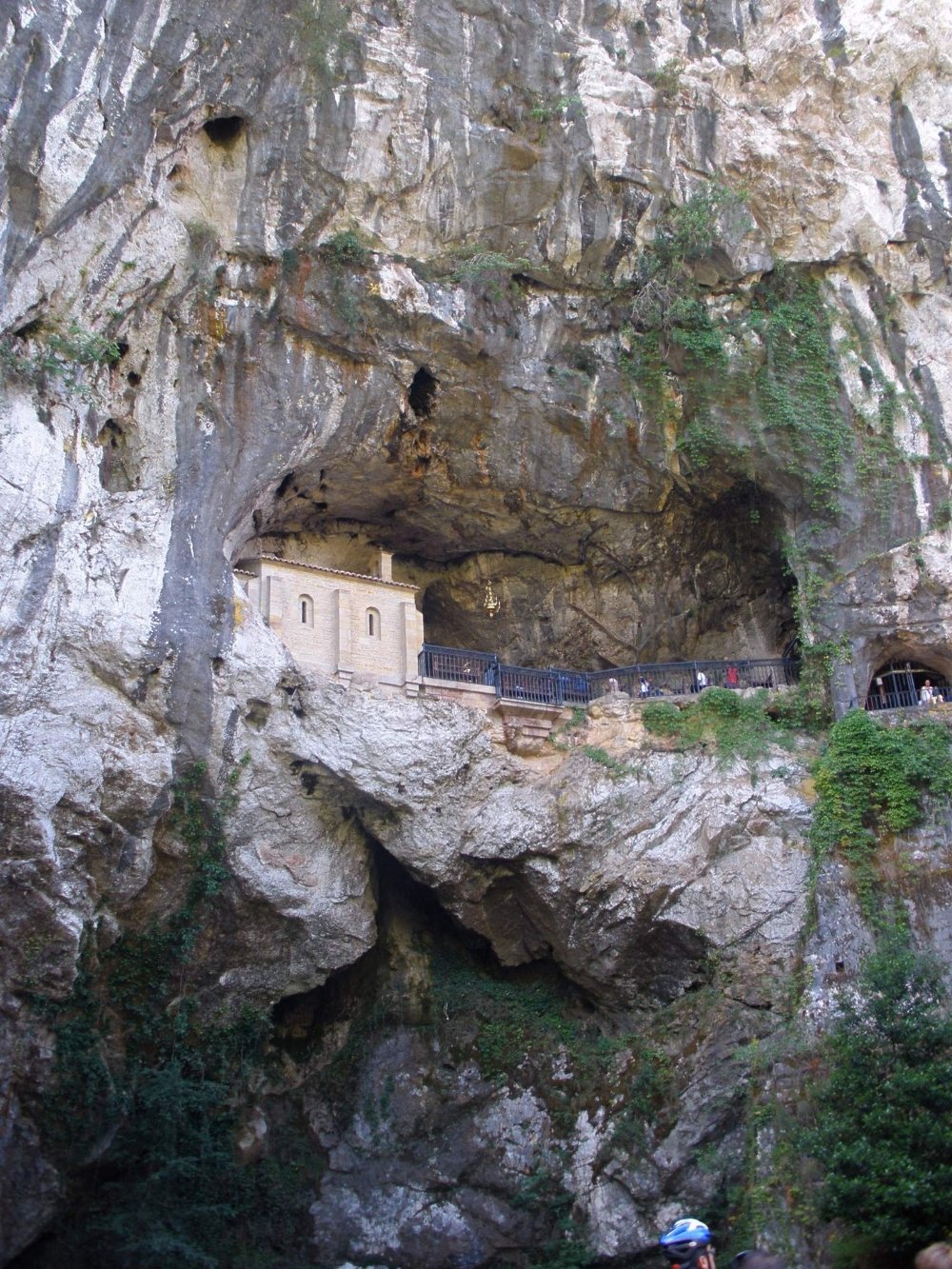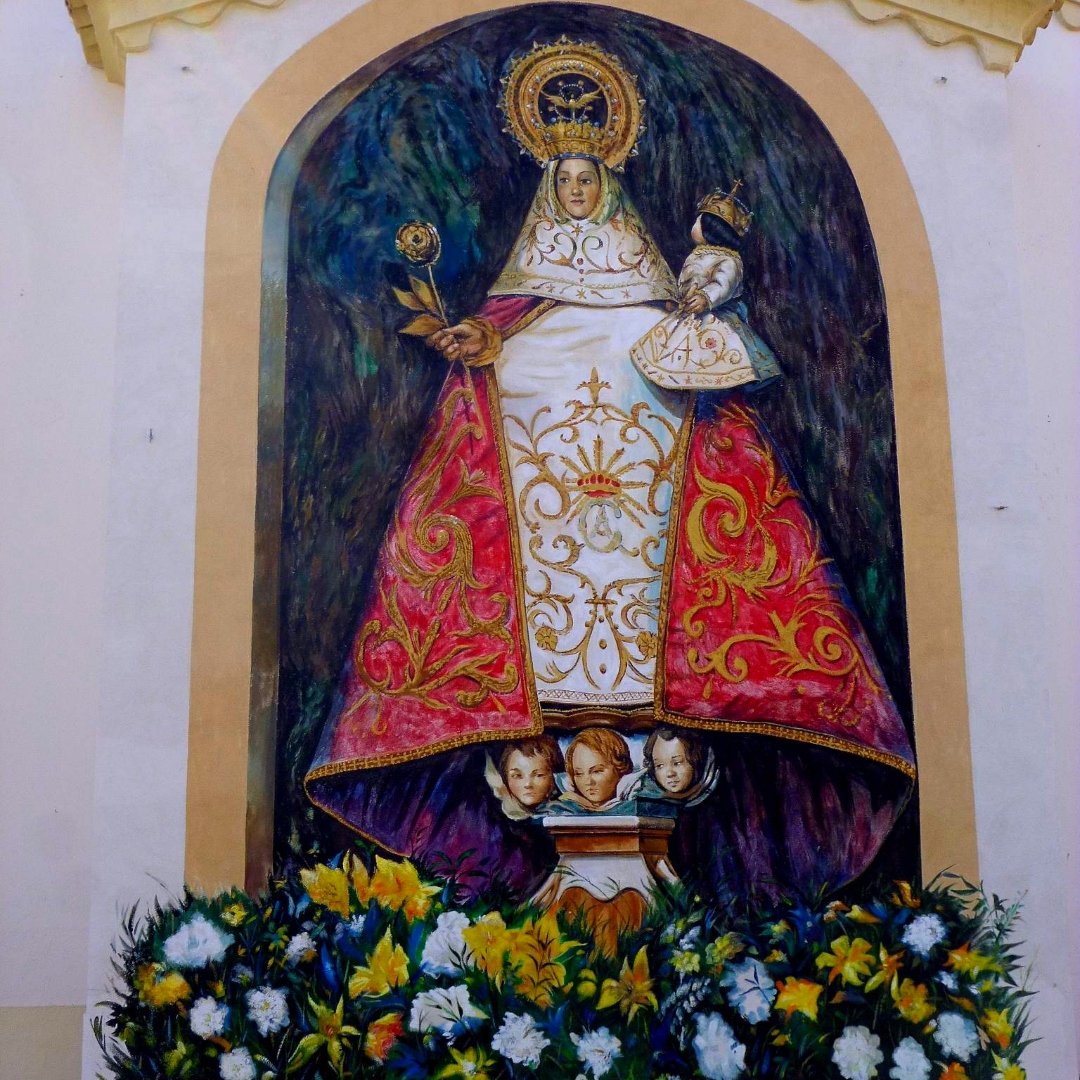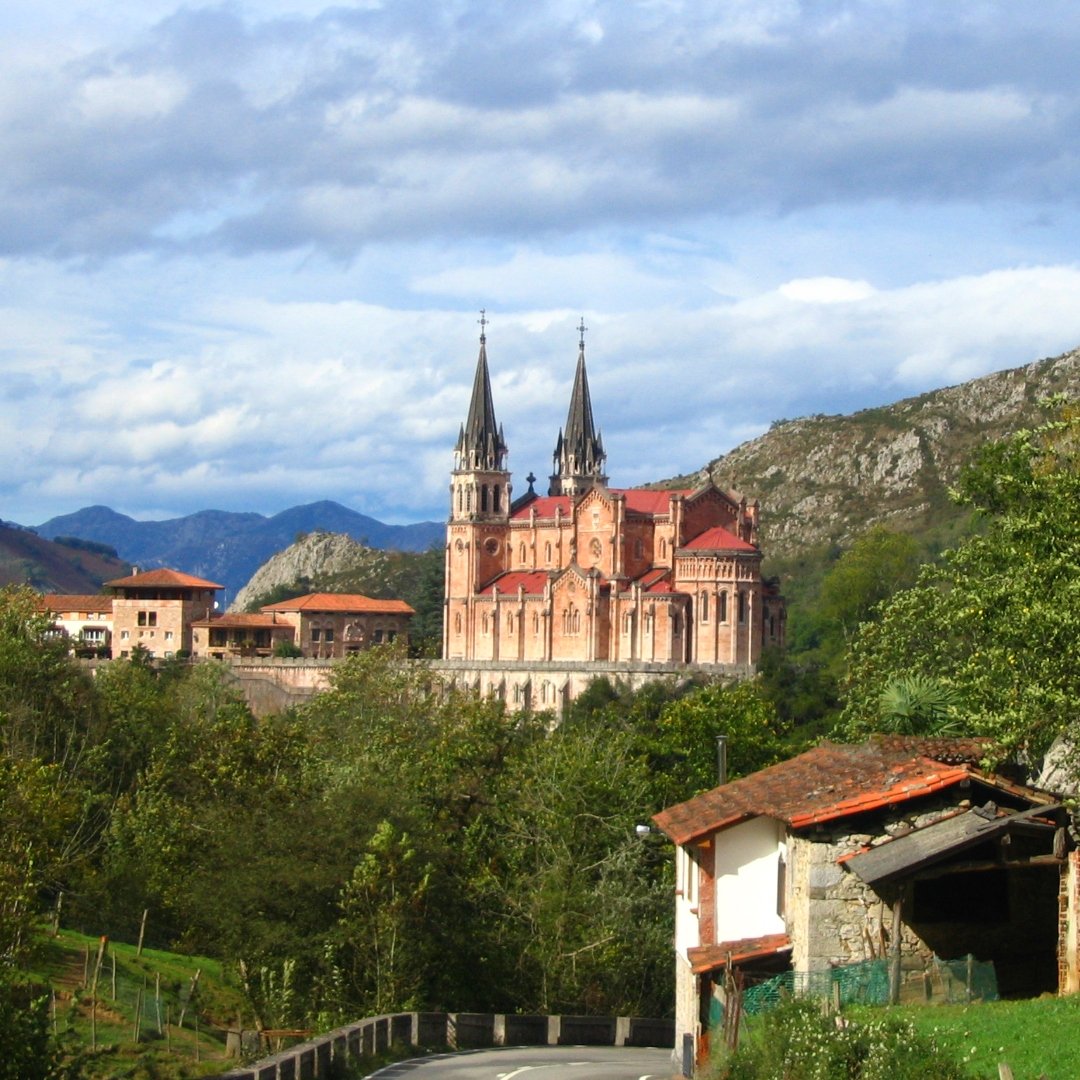As I said goodbye to my family, my dad blessed my forehead and reminded me to say a prayer every time I traveled. Upon our initial arrival to Madrid, I took in all of the beautiful scenery, including the stunning and historic basilicas and churches. I knew the country as a whole was predominantly Catholic and I was looking forward to attending Mass, especially since part of the beauty of our faith is that no matter where you are in the world, there is a familiarity to the rhythm of the Mass. Plus, I got to practice praying in Spanish.
In addition to attending Mass, one of the most memorable experiences for me was the day we took a charter bus to the lakes of Covadonga, in the mountains of the countryside of Asturias. The lakes were absolutely breathtaking, reminding me of Lake Tahoe in northern California. Clean, fresh mountain water was a welcome sight as we made our way to the top. What I wasn't expecting was the sight of what looked like a very small chapel on the edge of a cliff with a waterfall cascading below to a crevice with a fountain. Our professor informed us that we were looking at the Holy Cave.

According to Spanish history, Our Lady of Covadonga appeared to Dom Pelayo in what would later be named the Holy Cave. Without saying a word, she left behind a statue of the Blessed Mother holding Christ. In the midst of battle with the Moors, who had been invading Spain, Pelayo asked our Blessed Mother for protection. During the first battle in the mountains of Covadonga and under the protection of Our Lady, the Spanish were able to defeat the Moors. I learned that the Moors shot arrows at the Spaniards, and miraculously, the arrows reversed course and pierced the very men who initially shot them.
After the battle, Pelayo became the first king of Asturias. The Spanish credit our Lady with the victory over the Moors, as they had sought and received her protection. While the original cave was destroyed in a fire, it was later rebuilt to house the statue. A Basilica was also later built and consecrated, where the current statue of Our Lady of Covadonga is located. Pope John Paul II even visited the shrine during his time as the Pope. The feast day of Our Lady of Covadonga, September 8, is also celebrated as the Day of Asturias and was specifically selected to coincide with the feast of the Nativity of the Blessed Virgin Mary.

When I first learned about this while standing directly in front of the cave and listening to the waters flow, I was skeptical. Logically, it didn’t make sense to me but I also didn’t know a lot about the different ways in which Mary had appeared over the years. I had not yet fully learned about Fatima, except for the fact that it had to do with three small children somehow seeing the Virgin Mary. The significance had not yet resonated with me, just as Our Lady of Covadonga did not at the time.
A few days after visiting Covadonga, I attended Mass in an older church. I was surprised that there weren’t a lot of people there, but was comforted by the fact that I found a missalette with the readings and responsorial psalm as well as the songs. Of course, it was all in Spanish but it was still nice to have something. When I listened to the homily, in between trying to understand his accent and translating, I looked at the statue of Mary that was in the church. It was simple and similar to ones I’ve seen before.
I truly don’t remember much from the homily of that day but what I do remember is feeling mesmerized by the beauty of the statue as I listened to God’s word in a small but very old church in Aviles, Spain. I also remember thanking God for the opportunity to experience my faith in a different country and asking our Mother Mary for her protection. And she did and continues to protect us each and every day. Just as she protected the Catholic Spaniards in the Battle of Covadonga, she protects us all.

Copyright 2022 Jennifer Thomas
Images (from top): Markus Braun, Public domain, via Wikimedia Commons; Zarateman, CC0, via Wikimedia Commons; Zarateman, CC0, via Wikimedia Commons


